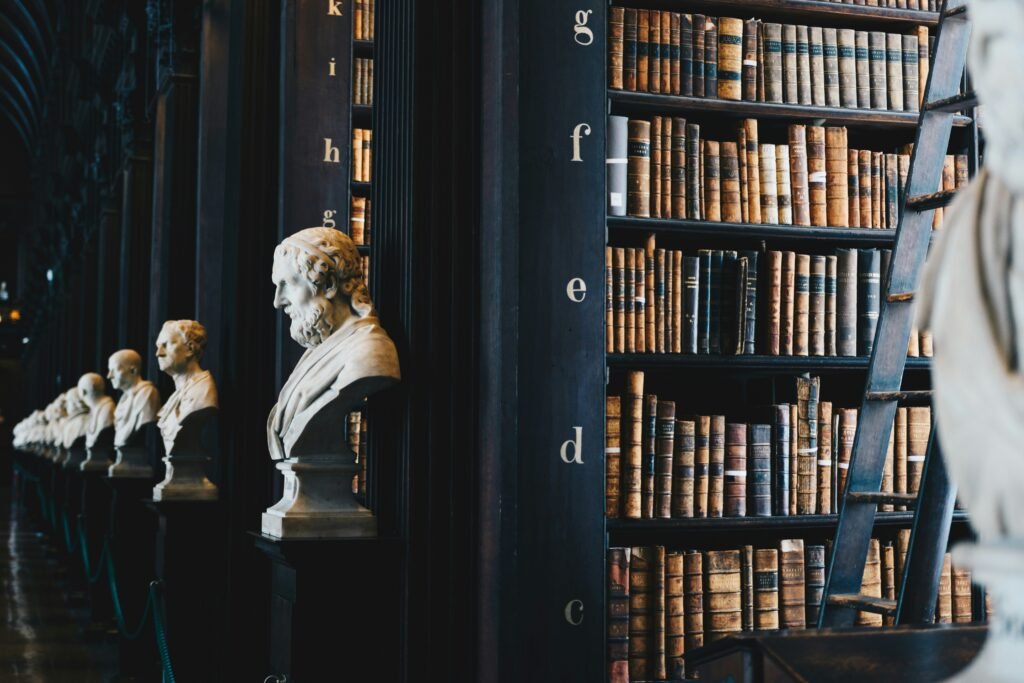Have you ever wondered about the important role history plays in shaping our present and future? It is through the lessons learned from the past that we are able to make informed decisions and create a better world for ourselves and future generations. In this article, we will explore the significance of preserving history and how each one of us can contribute to this noble cause. Join us on this journey to Save History and ensure that the stories of our ancestors continue to inspire and educate us.

This image is property of images.unsplash.com.
Preserving Historical Artifacts
Proper storage and conservation
When it comes to preserving historical artifacts, proper storage and conservation techniques are of utmost importance. By ensuring that artifacts are stored in suitable conditions such as temperature and humidity-controlled environments, their long-term preservation can be secured. This includes using archival-quality materials for packaging and handling artifacts with care to prevent any damage or deterioration. Additionally, regular inspections and maintenance are essential to identify any signs of deterioration and take necessary actions to preserve the artifacts.
Digitization of artifacts
In the digital age, the digitization of historical artifacts has become a valuable tool for preservation and access. By creating high-resolution scans and digital replicas of artifacts, their physical integrity can be protected, while providing a means for public viewing and research. Digitization also enables easy sharing of artifacts among museums, scholars, and the general public, reducing the need for physical transportation and minimizing the risk of damage.
Public access to artifacts
Making historical artifacts accessible to the public plays a crucial role in preserving cultural heritage. Museums and cultural institutions should strive to provide public access to their collections through carefully curated exhibits and guided tours. By engaging visitors with the stories behind the artifacts and encouraging interaction, museums can foster a deeper appreciation and understanding of our shared history. This can be complemented by outreach programs that bring artifacts to schools, community centers, and other public spaces to reach a wider audience.
Documentation and Archiving
Maintaining comprehensive records
Proper documentation and archiving of historical artifacts are essential for their long-term preservation and research. This includes recording important details such as origin, significance, condition, and provenance. Creating comprehensive records also involves capturing detailed photographs and conducting thorough research on each artifact to understand its historical and cultural context. These records serve as an invaluable resource for future generations of historians, researchers, and curators.
Creating digital databases
In the digital age, creating online databases for historical artifacts can significantly enhance access and research capabilities. By cataloging artifacts in a digital format, researchers can easily search and retrieve information, facilitating the cross-referencing of artifacts from different collections. These databases can also be linked to digital replicas of artifacts, creating a virtual museum experience for the public. Moreover, digital databases provide a centralized platform for academic collaboration and sharing of information.
Oral history interviews
Oral history interviews are an important method of preserving historical knowledge and firsthand accounts. By documenting the personal stories and experiences of individuals who have a connection to historical events or artifacts, valuable insights and perspectives can be captured. These interviews can be conducted with survivors, witnesses, or even experts in various fields. The information gathered through oral history interviews enhances the understanding and interpretation of historical artifacts, offering a more comprehensive narrative of the past.
Museum Exhibitions
Educational and interactive displays
Museum exhibitions play a vital role in presenting historical artifacts and engaging visitors. By using educational and interactive displays, museums can create an immersive and informative experience. This can include informative panels, multimedia presentations, touchscreen exhibits, and interactive models. By providing context and encouraging visitor participation, museums can enhance the learning experience, making it more enjoyable and memorable.
Preserving and displaying fragile artifacts
Fragile artifacts require specialized preservation techniques to ensure their long-term safety while being displayed. Museums often employ conservation experts to develop customized solutions for delicate items such as textiles, manuscripts, and fragile archaeological finds. Using controlled lighting, temperature, and humidity conditions, museums can create suitable environments that minimize the risks of degradation. Additionally, innovative display cases and mounting techniques can be used to provide maximum protection while still offering visual access to fragile artifacts.
Collaborating with other museums
Collaboration between museums in preserving and exhibiting historical artifacts can lead to significant benefits. By sharing resources, knowledge, and expertise, museums can work together to tackle common challenges, such as conservation techniques and research projects. Collaborative exhibitions can showcase artifacts from multiple collections, providing visitors with a more comprehensive understanding of a particular theme or historical period. Working together also allows for the exchange of ideas and best practices, ultimately improving the overall preservation and presentation of historical artifacts.
Supporting Historical Sites
Restoration and maintenance
Historical sites, including buildings, monuments, and archaeological sites, require regular restoration and maintenance to ensure their preservation. This involves employing skilled professionals, such as architects, archaeologists, and conservators, who specialize in heritage conservation. Through careful research and analysis, these experts can develop appropriate restoration plans that respect the original design and materials while also addressing structural stability and preventing further decay. Regular maintenance, such as cleaning and repairs, helps to prolong the lifespan of historical sites and allows for their continued enjoyment by future generations.
Promoting responsible tourism
Tourism at historical sites can have both positive and negative impacts on their preservation. It is essential to strike a balance between promoting tourism and protecting the integrity of the sites. This can be achieved by implementing responsible tourism practices, such as limiting visitor capacity, enforcing strict rules for behavior and photography, and providing guided tours to educate visitors about the historical significance of the site. Collaboration with local communities and tourism authorities can help ensure that tourism activities align with the preservation goals and sustainability of historical sites.
Involvement of local communities
The involvement of local communities is crucial for the preservation of historical sites. By engaging community members, their knowledge, expertise, and passion for their heritage can be harnessed to support preservation efforts. Local communities can contribute to site management, conservation projects, and educational programs. Their involvement also ensures that the significance of historical sites is recognized and appreciated within the community, promoting a sense of ownership and pride.

This image is property of images.unsplash.com.
Funding and Grants
Government grants for historical preservation
Government grants provide essential financial support for historical preservation initiatives. These grants can be allocated at the national, state, or local level and are often aimed at preserving significant cultural heritage sites or promoting research and education. Government funding allows for the execution of large-scale preservation projects, such as the restoration of historical buildings or the development of museum facilities. It also reinforces the commitment to preserving cultural heritage as a national priority.
Private donations and sponsorships
Private donations and sponsorships play a significant role in funding historical preservation projects. Individuals, corporations, and foundations interested in preserving cultural heritage can contribute financially to support specific initiatives. These donations can be used for conservation, research, exhibition development, or educational programs. Through partnerships with private donors and sponsors, museums, historical sites, and cultural institutions can secure the necessary funds to carry out preservation activities and ensure the long-term sustainability of heritage sites.
Crowdfunding initiatives
Crowdfunding has become an increasingly popular method of funding historical preservation projects. By leveraging the power of social media and online platforms, individuals and organizations can raise funds from a large number of people who share an interest in preserving history. Crowdfunding initiatives often offer rewards or incentives to encourage donations, ranging from exclusive access to exhibitions to personalized acknowledgments. This form of fundraising allows for community participation and engagement, generating support from a broad range of individuals who may not have been reached through traditional means.
Education and Awareness
Incorporating history in school curricula
One of the most effective ways to promote the preservation of historical artifacts is by incorporating history in school curricula. By teaching students about the importance of cultural heritage and its preservation, they can develop a sense of responsibility and appreciation for history from a young age. Including hands-on activities, field trips to museums and historical sites, and interactive learning materials can enhance the learning experience and foster a lifelong interest in history and preservation.
Hosting workshops and seminars
Hosting workshops and seminars focused on historical preservation can be instrumental in raising awareness and building capacity among professionals and the general public. These events provide opportunities for sharing best practices, discussing conservation techniques, and promoting the importance of preserving historical artifacts. Workshops can be tailored to specific topics, such as archival storage, digital documentation, or heritage restoration, while seminars can invite experts to present their research and insights, further contributing to the knowledge and awareness of preservation efforts.
Publications and media campaigns
Publishing books, articles, and research papers on historical preservation topics can contribute to the dissemination of knowledge and awareness. These publications can target both academic and general audiences, covering a wide range of subjects related to preserving historical artifacts. Media campaigns, including documentaries, podcasts, and social media campaigns, can also play a significant role in reaching a broader audience and engaging them in the importance of historical preservation. By combining various forms of media, awareness about cultural heritage preservation can be effectively spread.

This image is property of images.unsplash.com.
Historical Research
Encouraging academic studies
Encouraging academic studies in the field of historical research is crucial for advancing our understanding of the past and developing innovative preservation techniques. Scholarly research contributes to the knowledge base surrounding historical artifacts, their cultural contexts, and the methods employed in their preservation. Supporting research through academic institutions and offering grants and scholarships for relevant studies can help incentivize scholars and students to explore new avenues of research and contribute to the preservation of historical artifacts.
Collaborative research projects
Collaborative research projects between academic institutions, museums, and heritage organizations can result in significant advancements in the preservation of historical artifacts. By combining the expertise and resources of multiple entities, these projects can address complex preservation challenges and generate fresh insights. Collaborative research efforts can involve interdisciplinary teams, combining the fields of archaeology, conservation, materials science, and more, to develop comprehensive solutions for preserving and studying historical artifacts.
Preserving historical archives
Historical archives, including documents, photographs, and other written materials, play a crucial role in preserving and documenting history. Properly preserving these archives through digitization, proper storage, and conservation measures ensures their longevity and accessibility for future research and reference. Archival institutions should invest in professional conservation practices, including the use of acid-free materials, climate-controlled storage, and digitization efforts. With the preservation of historical archives, researchers and historians can delve further into the past and unlock valuable insights into our shared heritage.
Cultural Heritage Protection
Preventing theft and illegal trade
Theft and illegal trade of historical artifacts pose significant threats to cultural heritage worldwide. It is essential to establish strict regulations and international cooperation to prevent the smuggling and illicit trading of these valuable items. This includes the enforcement of laws that criminalize the looting and trafficking of artifacts, along with the establishment of specialized law enforcement units and international task forces dedicated to combating illicit trade. Raising awareness about the importance of legal acquisition and responsible collecting also plays a crucial role in deterring the demand for stolen artifacts.
Enforcement of strict regulations
Enforcing strict regulations regarding the preservation and protection of cultural heritage is vital to safeguard historical artifacts. This includes legislation governing archaeological excavations, export and import controls, site management, and conservation practices. Governments and heritage authorities must establish clear guidelines and best practices, while also ensuring regular monitoring and inspections to ensure compliance. The enforcement of regulations serves as a deterrent for illegal activities and ensures that cultural heritage remains protected for future generations to appreciate and study.
International cooperation
Preserving cultural heritage is a global responsibility, requiring international cooperation and collaboration. Cross-border agreements and alliances, such as UNESCO’s World Heritage Convention, facilitate information exchange, training programs, and joint preservation initiatives. International cooperation allows for the sharing of resources, expertise, and technologies, particularly in regions where historical artifacts face significant threats. By working together, nations can enhance the effectiveness of their preservation efforts and ensure the long-term protection of cultural heritage worldwide.
Historical Building Preservation
Adaptive reuse of historical structures
Preserving historical buildings often involves finding creative ways to adaptively reuse them. Rather than demolishing these structures, adaptive reuse seeks to give them new purposes that align with contemporary needs. Examples include converting old warehouses into art galleries, transforming historic mills into apartments, or repurposing former churches as event spaces. By repurposing historical buildings, their architectural and cultural value is retained, while also contributing to the revitalization of urban areas.
Promoting architectural conservation
Promoting architectural conservation involves raising awareness about the value of historical buildings and advocating for their preservation. This can be achieved through architectural firms specializing in conservation, heritage societies, and preservation organizations. By highlighting the unique architectural features, craftsmanship, and historical significance of these structures, the public’s appreciation for their beauty and cultural importance can be enhanced. Promoting architectural conservation helps ensure that historical buildings are recognized and protected as valuable assets within our communities.
Incentives for property owners
Providing incentives for property owners to preserve historical buildings encourages their active participation in preservation efforts. This can include tax benefits, grants, low-interest loans, or regulatory relief in exchange for implementing conservation measures. Incentives not only alleviate the financial burden of maintaining historical buildings but also incentivize owners to invest in quality restoration and maintenance. Through these programs, property owners become partners in preserving cultural heritage, contributing to the long-term survival of historical buildings.
Community Engagement
Volunteer programs
Engaging the community through volunteer programs can significantly contribute to the preservation of historical artifacts. Volunteer initiatives can include participation in conservation projects, archiving and cataloging historical collections, or conducting educational programs for visitors. By involving community members, museums and cultural institutions create a sense of ownership and pride, fostering a stronger connection between the public and their cultural heritage.
Historical reenactments and festivals
Historical reenactments and festivals bring the past to life, allowing the public to experience history firsthand. These events recreate historical scenes, dress, and activities, providing educational and entertaining opportunities for visitors of all ages. By combining historical accuracy with interactive elements, reenactments and festivals engage the community and create lasting memories. Moreover, they inspire a greater appreciation for historical artifacts and the importance of preserving them.
Interactive online platforms
The digital era offers exciting opportunities for community engagement in the preservation of historical artifacts. Interactive online platforms, such as virtual tours, digital exhibits, and citizen science projects, empower individuals to actively participate in preservation efforts from the comfort of their own homes. Through these platforms, the public can contribute to transcribing historical documents, identifying artifacts, or even funding preservation projects. Online engagement not only expands the reach of preservation initiatives but also allows people from diverse backgrounds and locations to contribute their knowledge and passion for history.
In conclusion, the preservation of historical artifacts is a multifaceted endeavor that requires dedicated efforts from various stakeholders. Through proper storage and conservation, digitization, public access, documentation, archiving, and engaging the community, we can ensure the long-term sustainability and appreciation of our shared cultural heritage. By advocating for adequate funding, supporting research and education, protecting cultural heritage, preserving historical buildings, and fostering community engagement, we can collectively save history for future generations to explore, enjoy, and learn from.


